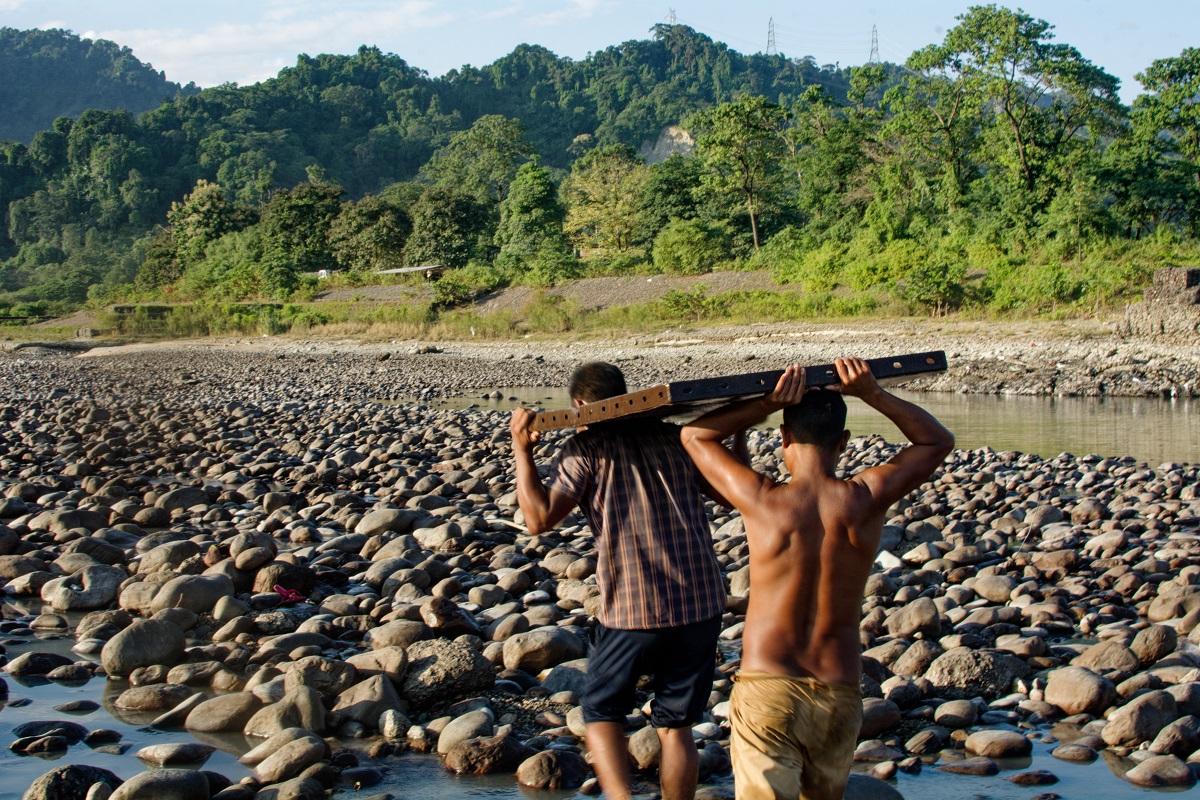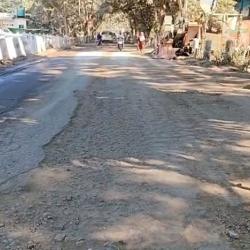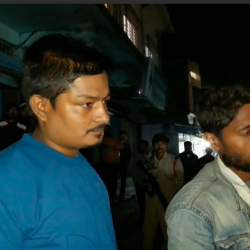The Lower Subansiri Hydel Power Project has recently highlighted the potential environmental consequences it may bring to the region. As geologists had long warned, the hills surrounding the project site are showing signs of strain under the immense weight of the colossal dam. Locals now fear that the river's course may be altered as it erodes the hills to which the dam is anchored. Adding to their apprehension, numerous landslides on the damsite have been interpreted as harbingers of a looming disaster.
The events of October 27th were not merely an accident but a glimpse of what could occur once the dam becomes operational. The sudden drying up of the riverbed filled the air with an unbearable stench. As locals desperately sought fish stranded in the receding waters, it unearthed vivid memories of the past.
Similar events unfolded after the devastating earthquake of 1950. Subansiri River was obstructed by a massive landslide that crashed into it due to the seismic event. For miles downstream, people witnessed the descent of rocks and sand from the once lush hills. Not a single tree remained to adorn the now barren landscape, which had thrived before the earthquake. On the night of August 19th, at midnight, the river eventually broke through the debris, resulting in one of the most horrific deluges in Assam's history.
Countless memoirs were penned and stories were passed down through generations. Although many of those who experienced it have since passed away, we have uncovered written accounts and translated them for the wider audience. This excerpt is from Upen Chutia, a resident of Lathia village, one of the oldest villages in the downstream area, who likely passed away in 2003. Before his death, he chronicled his experience, providing us with an invaluable historical account.
Recollection: The Great Earthquake of 1950
On August 19, 1950, a catastrophic earthquake struck at approximately 9:30 PM. The tremors continued for several minutes, causing the earth to spew forth sand, water, charcoal, and wood. Deep craters, measuring two to three feet in depth, emerged in various places, filling with water. Many people perished or were injured as they stumbled into newly formed chasms during the quake. There were multiple aftershocks over the course of an hour, persisting throughout the night and into the next three days.
On the 7th of Bhada, a midnight flood inundated our region. The river upstream remained blocked for five days, causing widespread submergence in several areas of NEFA. Local residents ventured out to capture fish and turtles using their bare hands.
The hill that had blocked the river was eventually eroded away, and Subansiri roared with massive waves. Our village was approximately 20 kilometers from the source of the flood. The sound of the rushing water was utterly terrifying, leaving us stricken with fear. Within moments, 12 to 14 feet of water surged through, obliterating vegetation and habitats. People had no time to release their cattle or untangle ropes. Some clung to their rooftops, but many houses and their occupants were carried away by the floodwaters. I recall seeing a roof drifting amid the waves with a small lamp. As we cried for help, the occupants of the floating roof replied in sorrow, "Farewell and stay strong. We are departing."
Cries of anguish and fear filled the air as heavy rain poured down upon us. A wall of debris got entangled in a series of bamboo plants on the north side of our village, stretching about half a mile. This makeshift barrier spared our village from total devastation.
As the dawn broke, people began searching for their loved ones. Some remained missing, and the search continued for three days until we recovered some lifeless bodies. At elevated spots, we observed tigers, elephants, snakes, and deer taking shelter together, displaying an unusual camaraderie. Fear had gripped even the animal kingdom.
Three young women, almost lifeless, were rescued from treetops. We lost 23 members of our village. Torajan and Ghasigaon were entirely obliterated, with no survivors, not even animals. The same fate befell Dirpai Bagan, Tajik, Pamua, Parghat, Sumoni, and Latak. On the west bank, Pathalipam, Alichiga, Gergeri, Uriamguri, Thekeraguri, Hesamora, Khagoroni, Tengakhat, and Na Pam experienced similar devastation.
Relief finally arrived from the government a week later, along with compassionate individuals and social workers who came to our aid. We remain deeply grateful for their support. The government provided each household with 300 Rupees, two bundles of roofing sheets, rice, lentils, and salt. Christian missionaries also worked tirelessly to provide food, clothing, and other necessities. However, people couldn't subsist on relief alone.
Starvation drove many to seek livelihoods elsewhere, and it wasn't until 1960 that some of us managed to reunite, while others never returned.
- 128762 reads









Add new comment